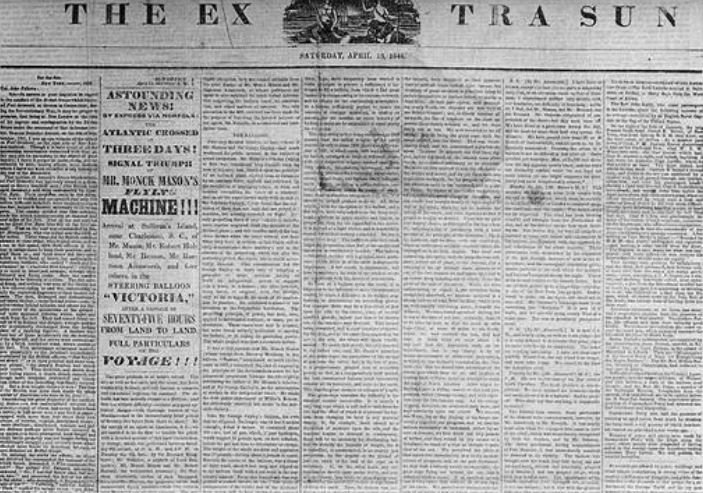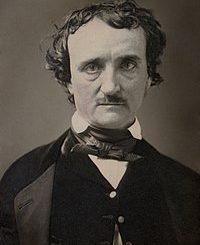12 Major Facts about Edgar Allan Poe

Edgar Allan Poe facts
Born on January 19, 1809 in Boston Massachusetts, Edgar Allan Poe holds a very unique spot in American literature. His rise to fame came with his exquisitely written poems and macabre short stories that caught the attention of readers in ways very few authors of his generation could.
The following are some interesting facts that shed more light on the life and works of Edgar Allan Poe (1809- 1849) – the enigmatic critic, poet and editor:
Poe was continuously dissuaded from pursuing a career in writing
Poe’s foster father was not the only one who tried to pursue Poe to abandon his writing ambitions. At some point in his childhood, Poe was consistently advised by his school’s headmaster not to go into writing and poetry. However, Poe rightly stood his grounds, and chose poetry over business. It is even believed that Poe was fond of writing poems all across the business documents of his foster father.
Edgar Allan Poe experienced severe financial problems
Edgar Allan Poe’s financial situation was so dire that in order to publish his third poem collection, Poe had to solicit for donations from his friends and cadets at the military academy. His friends at West Point helped raise about $170 for the publication.
His financial predicament was due to him severing ties with his foster family, particularly his foster father. Also, his first two poem collections performed very abysmally. Besides, back in those days, very few people took writing as a full time profession. In order to make ends meet, ill-paid writers had to get by doing other jobs in addition to writing.
Edgar Allan Poe got his nickname “Tomhawk” due to his excessive criticism
Poe was nicknamed “Tomhawk” or “the Tomhawk Man” due to his harsh criticisms of fellow writers and poets. Famous writers such as Henry Wadsworth Longfellow and Rufus Wilmot Griswold were often on the receiving end of his brutal criticism. For example, he once accused Henry Wadsworth Longfellow of plagiarism and sloppy writing. Due to his unforgiving criticism, Poe often found himself alienated by the writing community.
Poe lied mostly about his age and that of his wife
In order to get married to his first cousin, Virginia Eliza Clemm, Poe connived with her to falsify her age. The marriage documents stated that Virginia was 21 years, however, in actual fact she was just 13 years old. Interestingly, this was not Poe’s first time lying about something. In 1829, Poe lied about his age in order to gain entry into the U.S. Army. He claimed that he was 21 instead of 18 years. He also masked his identity by calling himself “Edgar A. Perry”.
He made writing a full time profession
Poe was one of the first writers or poet in the 19th century to make writing a full time profession. Considering how poorly writers were paid, Poe resorted to campaigning for better and timelier pay for writers in America.
Regardless of his critically acclaimed 1845 poem titled “The Raven”, Edgar Allan Poe died very miserable and in severe financial distress. This compelled Poe to campaign for better pay conditions for writers and proper international copyright laws. He believed that having copyright laws, publishers in America will have no option than to pay American writers properly.
Edgar Allan Poe’s most famous work, “The Raven”, made him about $9

Edgar Allan Poe Facts | Arguably Edgar Allan Poe’s most famous work- The Raven and Other Poems was published in 1845 by Wiley and Putnam, New York
Despite all its positive reviews, his most famous work, The Raven, earned about $9 in total. The Raven did, however, help catapult Poe into an established and respected writer. For centuries, writers and poets alike have regarded The Raven as the most famous poem to come from America.
Most of his loved ones died at the age of 24
In a frightening case of coincidence, his biological mother, elder brother, and wife all died at the age of 24. His mother’s death came in 1811. His brother’s death was in 1847- he suffered from alcoholism. And the most shocking of them all was that of his wife, Virginia Clemm Poe. She died from perhaps tuberculosis in 1847.
It has also been theorized that Poe ventured into dark themes of romanticism because of the numerous personal tragedies that befell him. It was only natural that he would develop a knack for using a lot of themes about the death of pretty women. Perhaps, it was his way of dealing with the numerous losses he suffered.
He struggled with alcoholism and gambling for years
Few weeks into his job as the Editor of the Southern Literary Messenger in Richmond, Virginia, Poe got dismissed in August 1835 for disorderly and drunken behavior. After promising not to do it again, Thomas W. White helped him get his job back. But two years later, he left his post after relapsing into his excessive drinking behavior and tardiness at work.
Edgar Poe made so many enemies in the literary community
He did not see eye to eye with Rufus Wilmot Griswold, and considered Griswold a man of low intellect and artistry. In turn, Griswold described Poe as a pathetic drunk, womanizer and incoherent writer. The genesis of their feud may have come as result of Graham’s Magazine replacing Poe with Griswold as editor. To make matters worse, Griswold was offered a much better pay than Poe used to get.
In the end, Griswold had the last laugh, although for a brief period of time. Griswold took to tarnishing Poe’s image after Poe’s death. He penned down the first biography of Edgar Allan Poe. The biography, titled “Memoir of the Author”, was full of disparaging remarks and false assertions about Poe. Going under the pseudonym Ludwig, Griswold claimed that Poe was a complete deranged man who spent most of his time boozed and drugged up. However, it was later revealed that Griswold story contained fabricated evidences against Poe, especially the one about his usage of drugs.
Edgar Allan Poe had a very mysterious death
On its own, Edgar Allan Poe’s death would qualify as a very moving and dark story. First of all, eye witnesses say that on the day that Poe was found in the street on October 3, 1849, he was wearing another man’s clothes. Second, all throughout his stay in the hospital, doctors say that he kept uttering the name “Reynolds”. These are two very strange facts about the circumstances surrounding his death. Up to this day, the exact circumstances and cause of Edgar Allen Poe’s remain a mystery.
Lizzie Doten fabricated ghost story about Edgar Allan Poe
Long after his death, some unscrupulous writers tried to cash in on these strange facts. In one incident that happened in 1863, Lizzie Doten claimed that she was visited by the ghost of Edgar Allan Poe. And during those visits, Poe would offer her some of his unfinished poems and short stories. Fans of Poe were quick to disregard her story as a complete hoax aimed at gaining cheap publicity. Moreover, Lizzie Doten’s so-called Poe inspired poems were simply awful and nowhere as good as Poe’s works.
Poe was responsible for “the Balloon Hoax”
He published an absolutely false story about a European Balloonist Monck Mason in the New York Sun. This hoax came to be referred to as “the Balloon Hoax”. In the story, published on April 13, 1844, Poe falsely claimed that Monck Mason journeyed across the Atlantic Ocean in only 75 hours using an air balloon. He even detailed the steps and apparatus that Monck took to cross the ocean. A few days after Poe’s publication, the newspaper retracted the story.

Edgar Allan Poe Facts | Poe’s Balloon-Hoax as it appeared in the New York Sun on April 13, 1844.

Headline of the Poe’s Balloon Hoax of 1844



























